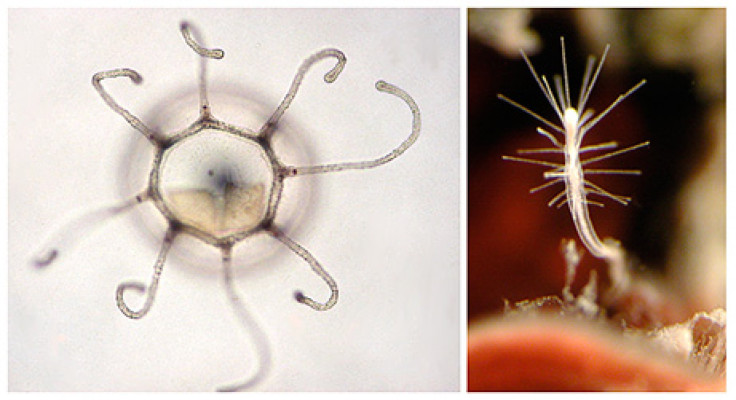Immortal Jellyfish To Ageless Aspen Trees: Animals And Plants Who Found The Fountain Of Youth

In the real world, the key to immortality isn’t drinking the nectar of the gods or making Faustian bargains involving charmed paintings. Some creatures on Earth have already figured out the secret to eternal -- or at least near-eternal -- life.
The “Benjamin Button” jellyfish, known more formally as Turritopsis dorhnii, is only about as wide as the nail on your pinky finger when fully grown. But this creature has the uncanny ability to reverse and then restart its life cycle. After it spawns, the adult T. dohrnii can reabsorb its tentacles into its body, then form a shell to resemble its first stage as a polyp. The polyp then makes medusas.
Not every member of T. dohrnii achieves immortality -- it appears that it takes injury, starvation or some other dire situation to provoke its reboot function. Scientists still aren’t quite sure how the jellyfish manages to throw the aging switch in reverse.
“Immortality might be much more common than we think,” Dartmouth university paleobiologist Kevin Peterson told the New York Times in December. “There are sponges out there that we know have been there for decades. Sea-urchin larvae are able to regenerate and continuously give rise to new adults. This might be a general feature of these animals. They never really die.”
Another, more familiar sea creature has brushed against biological immortality: the lobster. Though still susceptible to predators and fishermen, the lobster is one of a select few species that do not seem to decline with age, like most other creatures. It’s unclear just how long lobsters can live, and some scientists think that, if a lobster is lucky enough to avoid predators, it could potentially live forever.
One giant lobster that barely escaped becoming an entrée in 2009 was supposedly 140 years old, though this estimate was just based on the creature’s weight.
One of the latest advances in crustacean age research came this past December, when University of New Brunswick scientists discovered that, like trees, lobsters show their age in rings. In the lobster’s case, the rings can be found on the eyestalks or inside certain parts of the stomach, the researchers said in a paper published in the Canadian Journal of Fisheries and Aquatic Sciences.
Scientists also count rings on another elderly denizen of the deep: the quahog clam. In 2007, Bangor University scientists found a specimen off the coast of Iceland that had 405 growth rings, suggesting that the clam was born just around the time that William Shakespeare’s “The Merry Wives of Windsor” was first published.
On land, it’s hard to find animals that can match the longevity of lobsters, clams or jellyfish. To find the truly ancient creatures hanging out above the ocean, we have to turn to plants, like the aspen colony in Utah known as Pando or the Trembling Giant. Genetic tests suggest that the trees in the colony are genetically identical clones connected by a root system that is estimated to be about 80,000 years old.
“In principle, clones may even be essentially immortal, dying only from disease or the deterioration of the environment rather than from some internal clock,” a reporter for Discover magazine wrote in 1993.
If you want to look for a more conventionally defined single organism in the search for an immortal creature, there are a few individual trees that are still keeping on after thousands of years, like the Llangernyw Yew in Wales, thought to be between 4,000 and 5,000 years old, or Methuselah, a Great Basin bristlecone pine in California whose age is estimated to be about 4,844 years old.
While it’s possible that stem cell research could slow down aging in humans, the existence of biological immortality prompts the question: Why stop there?
“Turritopsis application for human beings is the most wonderful dream of mankind,” he told the New York Times. “Once we determine how the jellyfish rejuvenates itself, we should achieve very great things. My opinion is that we will evolve and become immortal ourselves.”
© Copyright IBTimes 2024. All rights reserved.











